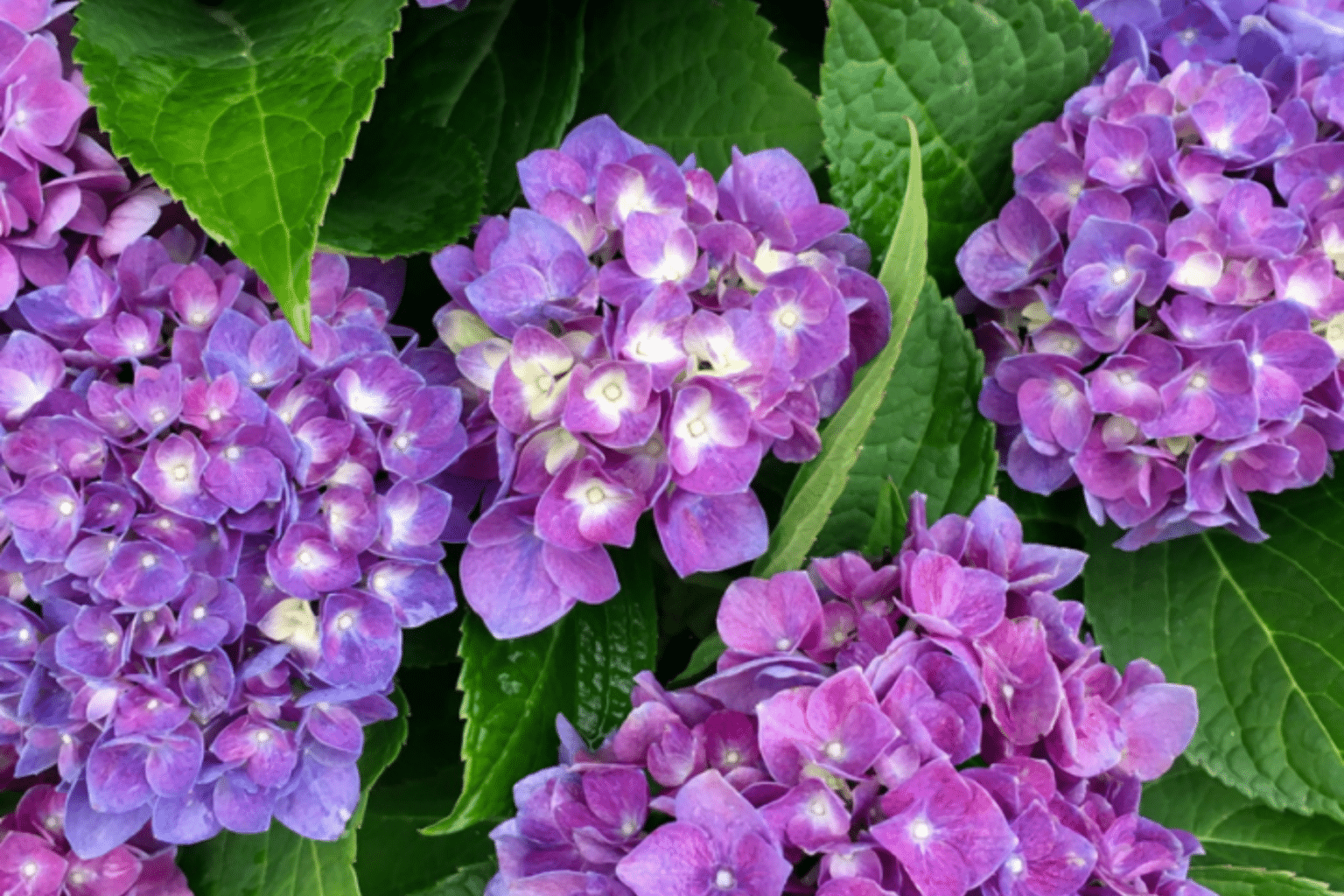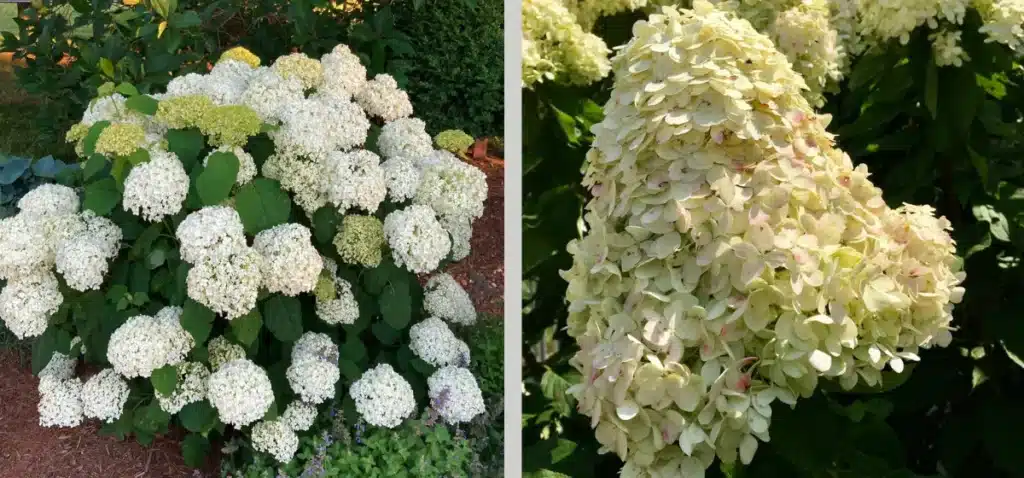It’s the season of blooming gardens, and the hydrangea, with its large clusters of flowers, stands out as the symbol of summer. Despite being a staple in many landscapes, hydrangeas are often considered temperamental and difficult to grow. However, this notion is quite far from the truth. By understanding the differences between the commonly grown species, anyone can achieve success in growing hydrangeas. The key to success is just around the corner.
How to Identify Your Hydrangea Type
The world of hydrangeas is massive, and it’s easy to get overwhelmed. Fortunately, for U.S. gardeners, out of the 70 to 75 species worldwide, only six are commonly grown here. Of course, these six species encompass over 600 varieties, but once you’re familiar with these species, you’ll be ready to care for the rest.
Here are the six common species in the U.S. Your hydrangea is likely to be one of these.
Bigleaf (Hydrangea macrophylla): hardy to zone (5) 6
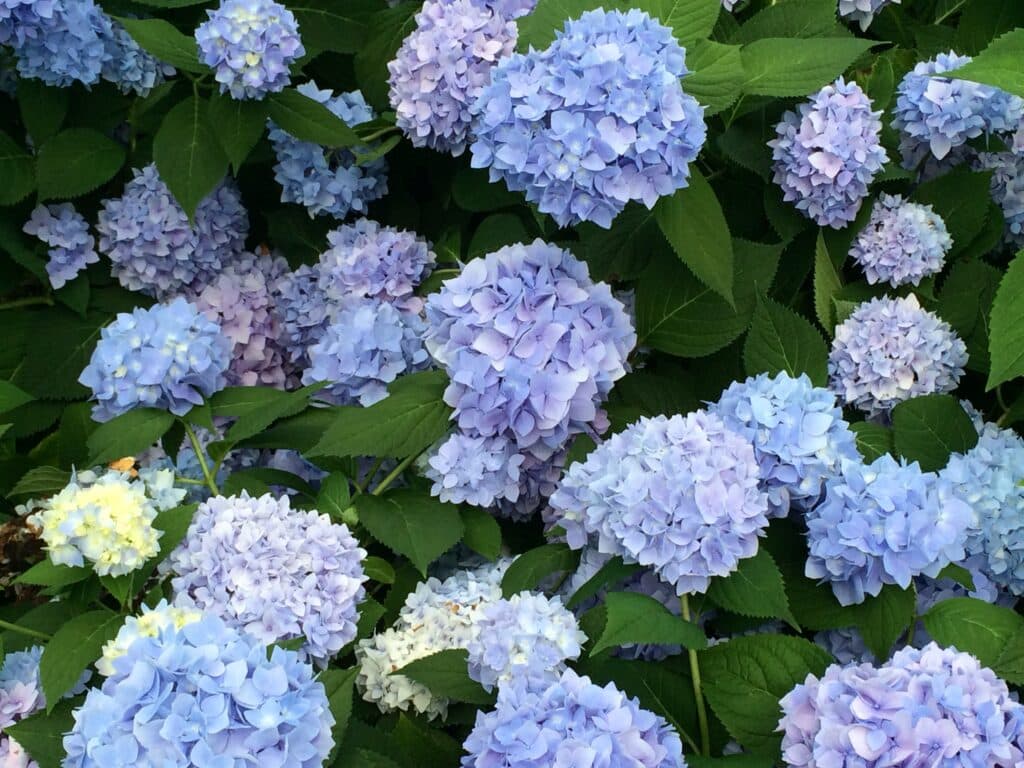
The leaves of the bigleaf hydrangea are thick, smooth, and dark green with toothed edges. While most bigleaf hydrangeas are blue, purple, or pink, white and red varieties are also available. The flowers of the bigleaf hydrangea can either be in the form of a mophead or a lacecap.
Mountain (Hydrangea serrata): hardy to zone (5) 6
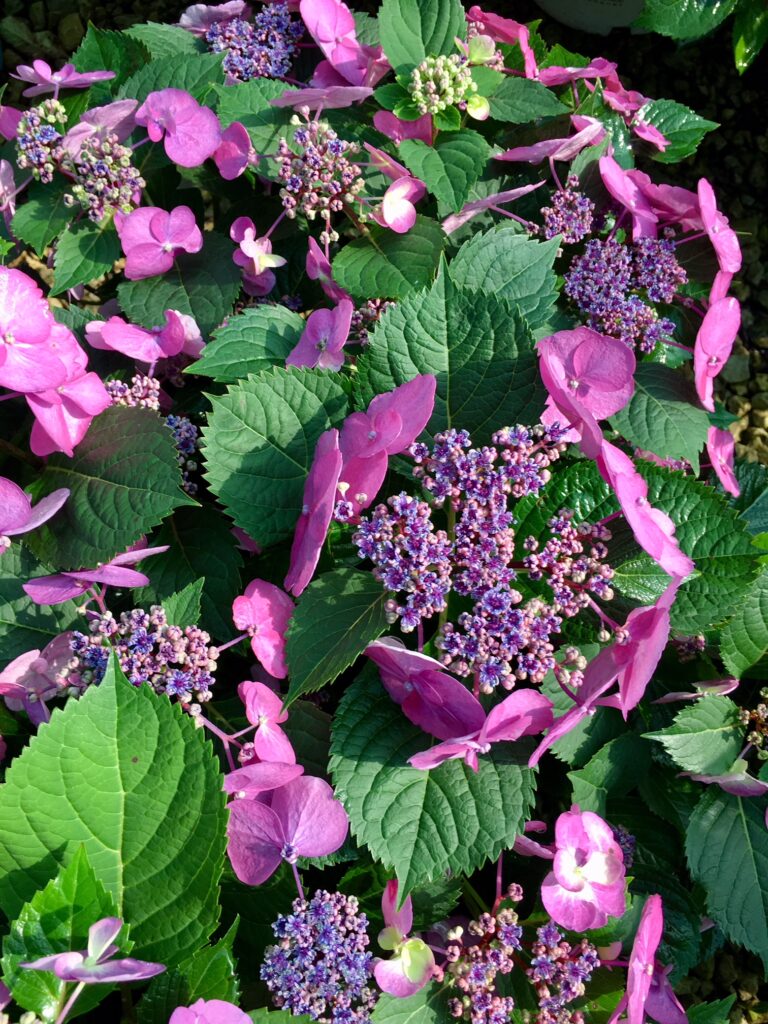
Although mountain hydrangea is similar to bigleaf hydrangea, its varieties often remain smaller. They display lacecap flowers, which are typically blue or pink.
Smooth (Hydrangea arborescens): hardy to zone 4
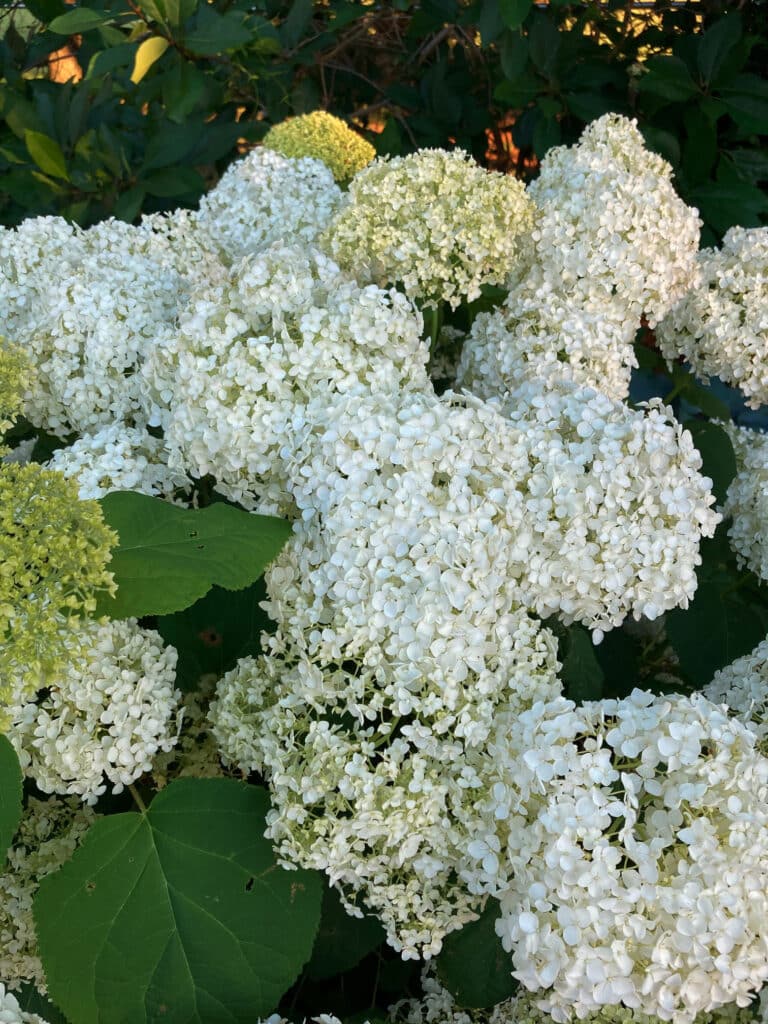
The foliage of smooth hydrangea, which is somewhat heart-shaped, displays a dark green color with a toothed edge. Its texture, reminiscent of a perennial, has a matte finish. Available in white and pink, the flowers of smooth hydrangea bloom from late spring into summer. This species of hydrangeas is native to the U.S.
Panicle (Hydrangea paniculata): hardy to zone 3

Panicle hydrangea leaves are medium green, noticeably thinner, and have a rough texture. The blooms, depending on the variety, can be cone-shaped or round, and the flowers can be either full or sparse. The size of the plant can range from 3 feet to 12 feet. While some blooms may fade to shades of pink or red, all panicle hydrangeas initially bloom white.
Oakleaf (Hydrangea quercifolia): hardy to zone 5

The Oakleaf hydrangea has leaves shaped like those of an oak tree, making it easy to identify. Its blooms open white but often fade to pink or red. Although this hydrangea can tolerate full shade, it thrives best in partial shade to full sun. In these conditions, its leaves will turn a lovely shade of red in the fall.
Climbing (Hydrangea petiolaris): hardy to zone 4

The climbing hydrangea, a large woody vine that blooms in mid-summer, can attach itself to most surfaces. It produces white, airy blooms and prefers some afternoon shade for protection from the sun.
The Difference Between Mophead and Lacecap Hydrangea Flowers
Hydrangea flowers are clusters of florets, a structure known as an inflorescence. This inflorescence consists of small fertile florets and sterile florets. The sterile florets have showy sepals, which are commonly referred to as the flower.
Mophead flowers predominantly consist of sterile, showy florets.
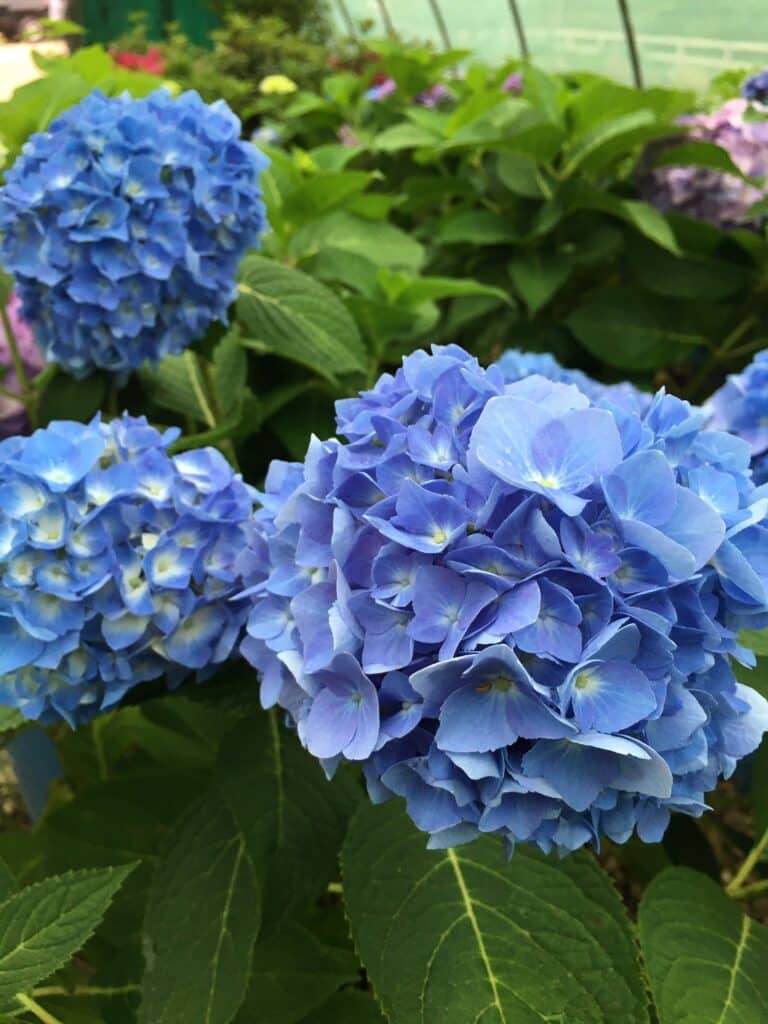
Lacecaps primarily consist of visible fertile florets, which are surrounded by an outer ring of sterile florets.
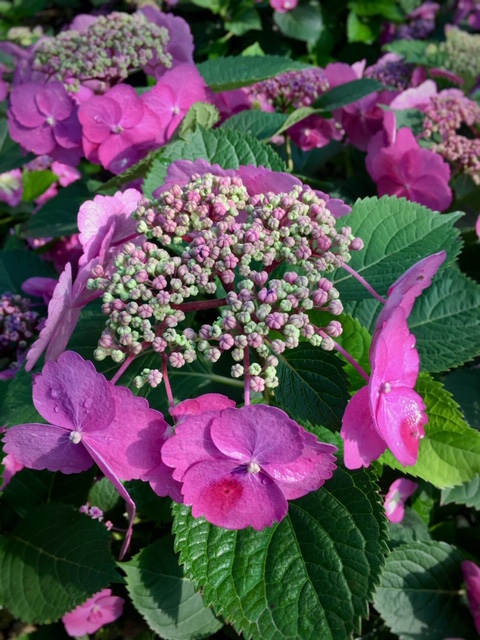
Best Time to Prune Hydrangeas
Incorrect pruning is the main reason for flower loss in hydrangeas. It’s crucial to know your hydrangea’s specific species, as this will indicate whether the plant blooms on old or new wood. This knowledge helps you know when, how, and whether you should prune.
Old Wood Hydrangea:
Flower buds form on the previous year’s growth in late summer or early fall. This applies to old wood hydrangeas such as bigleaf, oakleaf, mountain, and climbing varieties.
Pruning should be done immediately after they bloom.
New Wood Hydrangea:
Flower buds are formed on new growth during the spring. This includes panicle and smooth hydrangeas.
You should prune these in late winter or early spring, before new growth appears.
Many new cultivars are re-bloomers, meaning the plant produces buds on both old and new wood, which extends the flowering season. The most prolific blooming typically occurs without pruning. However, if necessary, pruning can be done after the first bloom or in late winter.
Hydrangeas are generally forgiving plants. Although pruning at the wrong time may result in a season without flowers, it won’t cause permanent damage to the plant. With a variety of new cultivars available in different sizes, selecting the proper hydrangea for your location can minimize the need for pruning.
Why Your Hydrangeas Aren’t Blooming
Four main factors can inhibit blooming in hydrangeas:
Time: Hydrangeas may take 2 to 5 years to mature enough to bloom.
Light: Most hydrangeas require at least 4 to 6 hours of sunlight for optimal blooming. Here are the ideal sunlight conditions for the St. Louis region:
- H. macrophylla (Bigleaf), H. serrata (Mountain), and H. petiolaris (Climbing) – Morning sun and afternoon shade or filtered shade.
- H. paniculata (Panicle), H. quercifolia (Oakleaf) – Full sun or morning shade and afternoon sun.
- H. arborescens (Smooth) – Predominantly sun or filtered sun.
Pruning: Hydrangeas fall into two categories—those that bloom on old wood and those that bloom on new wood. Pruning at the wrong time can remove flower buds. Additionally, animals, particularly deer, can “prune” the plant for you.
Winter Temperatures: Cold snaps can cause dieback. While panicle and smooth hydrangeas are typically resilient, cold temperatures can damage the flower buds of bigleaf, mountain, climbing and oakleaf varieties.

Can You Change the Color of Your Hydrangeas?
Panicle and oakleaf hydrangeas bloom white but often fade to shades of pink or red, depending on the cultivar. Smooth hydrangeas, however, cannot have their color adjusted. While they don’t fade to pink, they frequently fade to chartreuse. The bloom color of climbing hydrangeas is unchangeable.
Conversely, adjusting the pH levels in the soil can easily alter the color of some hydrangeas.
Many pink and blue cultivars of bigleaf and mountain hydrangea can change colors. Adjusting the soil’s pH can cause the flowers on these plants to vary from pink to blue and all shades in between. However, adjusting the pH does not affect the white flowering cultivars of these species.
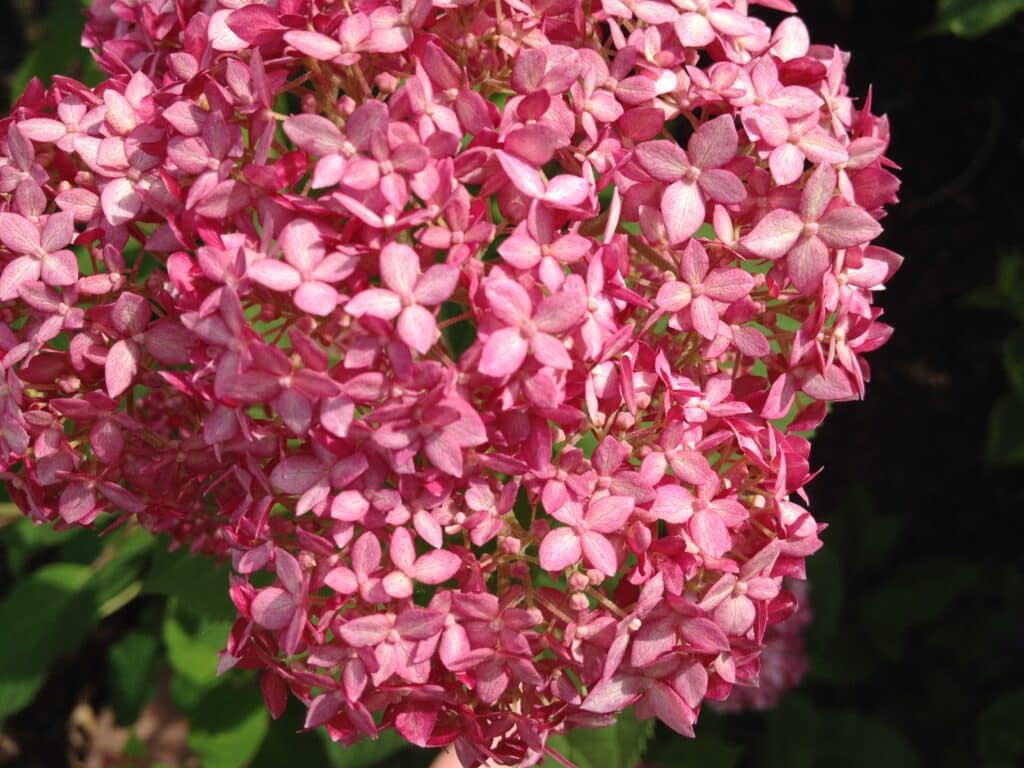
Adjusting the Color of Your Hydrangea: A How-to Guide
Blue: To achieve blue flowers on a hydrangea, aluminum is required. Although aluminum is usually present in soil, it’s not always accessible to plants. By lowering your soil’s pH, the plant can absorb the necessary aluminum to alter the hydrangea bloom’s color.
Adjusting the soil to a pH of 5.5 or lower will result in blue blooms. A pH ranging between 5.5 and 6.0 will produce flowers in shades of purple.
Use soil acidifiers and Aluminum Sulfate to produce blue flowers.
When fertilizing, select a fertilizer high in potassium (last number) and low in phosphorous (middle number).

Pink: Pink flowers can be achieved by raising the soil pH, which prevents the plant from absorbing the aluminum present in the soil, thereby allowing the plant to retain its pink flowers.
In the St. Louis region, most bigleaf and mountain hydrangeas will be pink.
Pink flowers require a soil pH of 6.0 or higher. This can be accomplished by adding dolomitic lime.
To promote pink flowers, use a fertilizer high in phosphorus (the middle number).
Hydrangeas’ versatility is limitless, whether they’re added to a formal landscape or used to create structure in a perennial garden. With the stunning range of varieties available today, hydrangeas have become an easy-to-grow, low-maintenance shrub.



